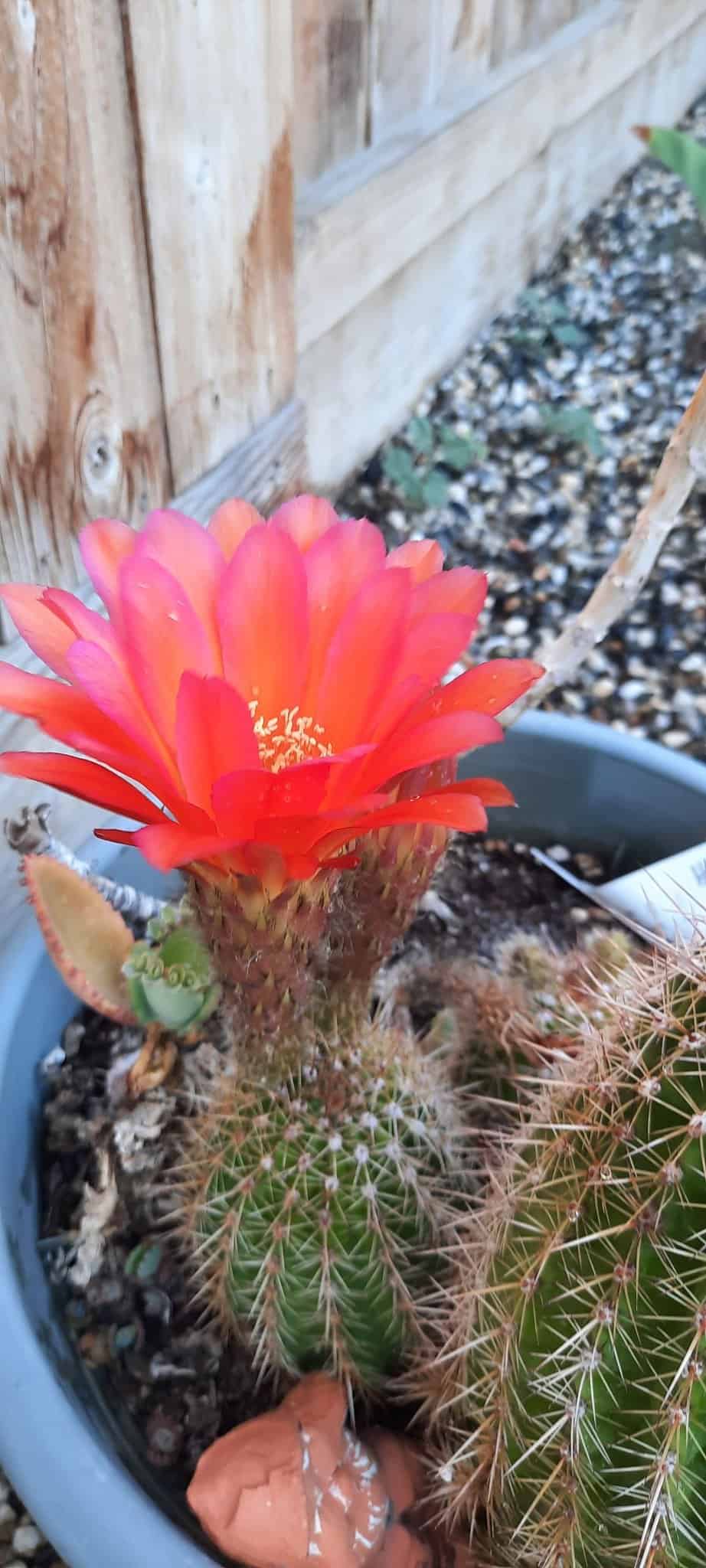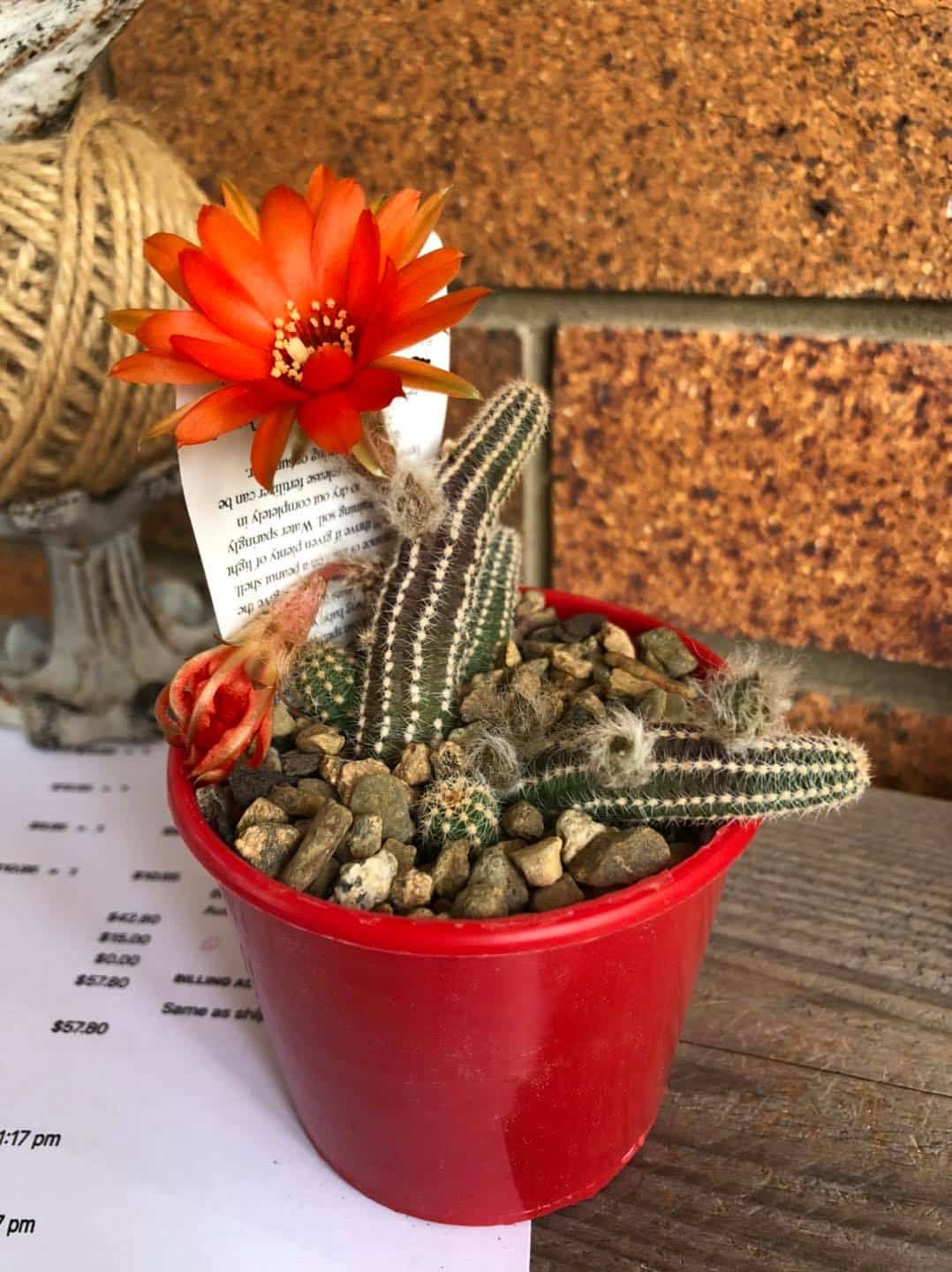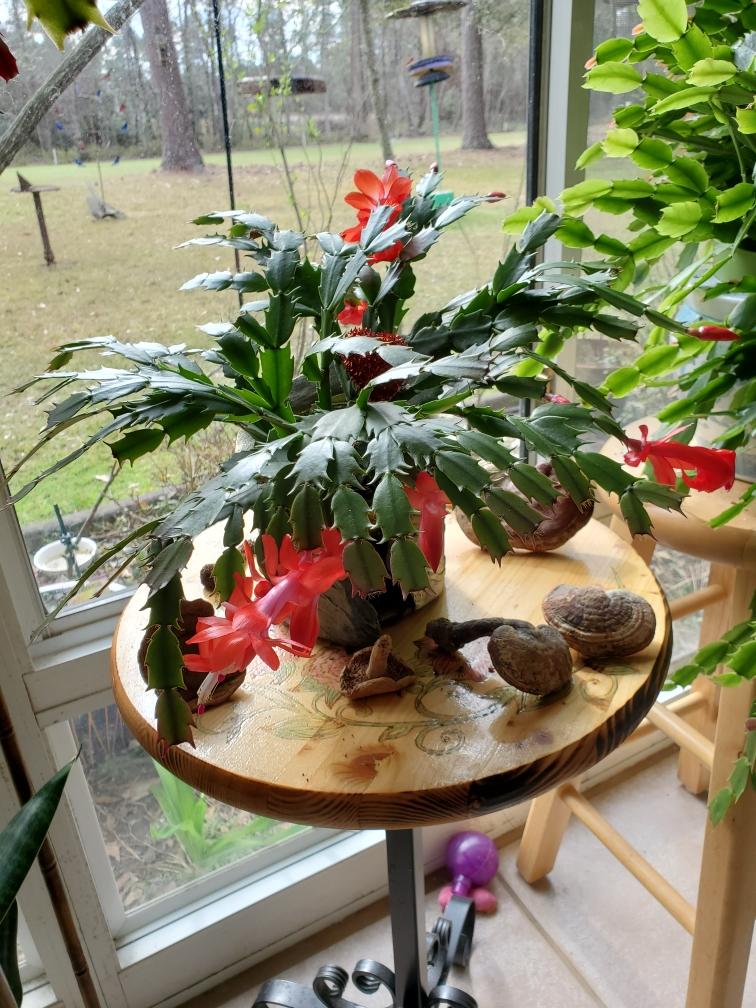Red cacti are often grafted species, but unlike these, wide cactus varieties bear red flowers or fruits to become perfect succulents at home.
These red fashions appear most commonly in tropical cacti, like native species of Brazil. Though it is rare to witness red blossoms in dessert succulents, they can produce occasionally.
Let us find some exotic red-flower-bearing cacti species you can grow at home!
Table of Contents Show
8 Popular Red Cactus Flowers
Cacti is a succulent that thrives in warm weather with ample direct sunlight.
However, not every cactus will bear exotic-looking red flowers, and only a handful of cacti species will likely bloom with signature red flowers.
Some popular cacti species that bear red flowers include Echinopsis, Cleistocactus, Echinocereus, Disocactus, Opuntia, and Ferocactus.

Remember, the red cacti flowers will only begin flowering once they’ve matured, taking one to ten years.
Let us look at some of the unique cacti that bear red flowers.
1. Prickly Pears
Prickly Pears are a variety of Opuntia, a flowering cactus species native to North America.
Did you know its red cup-shaped flowers will only last a day before beginning to form a pear-shaped fruit?
This one is drought-tolerant and can survive in many substrates; therefore, they are often kept as ornamental houseplants.
It will grow up to 2-5 feet in height depending on where you grow it, pot or ground.
Remember, it may take over four years before it starts blooming and producing edible fruits.
Fertilize your Prickly Pears monthly with a 5-10-10 solution and provide ample direct sunlight, but cut back on everything in fall and winter to ensure dormancy.
2. Claret Cup
Claret Cup (Echinocereus Triglochidiatus) is a cactus native to the southwestern US and Mexico, such as Utah, Colorado, Texas, and New Mexico.
The typical desert flowering species will thrive outdoors in full sun with regular watering in hot months.
Also known as Scarlet Hedgehog, it boasts scarlet red blooms about 1-2 inches wide with multiple petals that turn into small, round, green fruits.
The Claret Cup is a shorter cactus but will extend 3-4 feet across when provided with ample ground area.
Moreover, these cacti are not heavy feeders, requiring fertilizing only once a month in spring.
3. Orchid Cactus
Orchid Cactus (Disocactus ackermannii) is an epiphytic cactus belonging to the tropical forests of Veracruz and Oaxaca, Mexico.
These plants thrive in indoor environments with dappled sunlight and regular watering every two weeks in spring and summer.
Moreover, provide high-phosphorus fertilizer every two weeks in spring and summer to boost blooms.
They will grow about 10 feet in height when provided with the optimal growing condition.
4. Peanut Cactus
Peanut Cactus (Echinopsis chamaecereus) is native to Mexico and South America and is known as one of the rarest cacti.
However, the profusion of stems will form a large cluster, making it look wider.
The cactus blooms every spring or summer with red or orange flowers measuring about 2 inches wide.

They seem prickly but soft to the touch and are pretty popular as ornamental plants grown outdoors and indoors.
Remember, it requires full sun for about 6-8 hours every day in spring and summer, with watering every two weeks.
Besides, it blooms in cooler temperatures.
5. Fire Barrel Cactus
Fire Barrel Cactus (Ferocactus gracillis) is a small barrel-shaped cactus hailing from Northwestern Mexico.
It gets its name from the striking red coloration of its spines and flowers and its barrel-like shape.
These flowers would only appear in summer; unlike other cacti, they will retain flowers for up to six weeks.
These flowers will gradually turn into fruit buds which can be harvested from late November to March.
An extremely slow grower will take ages before reaching a full height, usually 3-4 feet.
Choose a sunny location with well-draining cacti soil and water once a few weeks to keep it looking healthy.
6. Fishhook Cactus
Fishhook barrel cactus (Ferocactus wislizenii) is commonly called a hook-spine species because of its spikes that resemble fish hooks.
They originally grow along desert washes from southwestern North America to the Caribbean.
You can quickly identify it by its thick, usually 2 feet wide, barrel-shaped body and hooked spines.
These flowers usually appear in the fall (September and October).
These cacti will hardly grow over 6 inches, making them perfect ornamental cacti to grow outdoors and indoors.
Keep it in bright to high light spots, near a south or west window, but away from direct sunlight to avoid sunburn.
However, do not confuse it for Hook Cactus (Echinopsis cinnabarina), which has a round-to-globular stem.
7. Kingcup Cactus
Kingcup Cactus (Echinocereus triglochidiatus) is native to the southwestern US and northern Mexico, where it grows in the desert to rocky slopes.
It is mainly grown for showy flowers that display an orange-red to scarlet shade from late spring to July.
However, these blooms will last only 2-3 days before collapsing from fruit buds.
One way to identify Kingcup cacti is from their dense spines that give a wooly appearance.
Like every cactus, it needs good drainage and direct sunlight to maintain a healthy appearance. However, keep it dry and cool with ample diffused sunlight to boost flower production.
8. Christmas Cactus
Christmas Cactus (Schlumbergera x buckleyi) is unlike other cacti that display pointy spikes.
Originating in the coastal mountains of southeastern Brazil, these cacti grow in the shade with high humidity.

The holiday cactus will bloom in October, continue until November, and display red and purple flowers.
Do not confuse Christmas Cactus with Thanksgiving and Easter cacti, which grow at different times and display slightly different-looking stems.
7 Additional Red Cactus Flowers
Here is a list of a few other popular red cactus flowers.
| Red Flower Cacti | Specification |
|---|---|
| Moon Cactus | Moon cactus (gymnocalcium) is native to South America. It resembles a full moon due to its round, gibbous shape. It grows best in sunny climate and display vibrant red flowers. |
| Dwarf Chin Cactus | Dwarf Chin Cactus (Gymnocalycium Baldianum) is a tiny cactus that grows up to 5 inches. It displays red/purple flowers. The flowers become 1.6 inches in diameter. |
| Red Orchid Cactus | Disocactus ackermannii is a trailing cactus that grows 5-6 inches. It displays stunning red flowers that grow around the edges of the flattened cactus stems. |
| Easter Cactus | Easter Cactus (Hatiora gaertneri) is similar to the Christmas cactus. It displays funnel-shaped flowers growing from the end of the flattened stems. The bloom can become up to 3 inches wide. |
| Cane Cactus | It looks like desert cacti with branched shrubs. It displays small scarlet flowers in bright to deep red shades. It requires bright sunlight and sparse watering. |
| Cleistocactus Samaipatanus | It displays stunning tubular red flowers that grow up to 2 inches. The flowers grow from areoles along the stems. The stems look lime green with a heavily ribbed texture. |
| Tree Cholla | Cylindropuntia imbricata is a small tree-like cactus. It can become up to 8-15 feet tall in the wild. The flowers retain pink, and violet to red colors. |
If you need other than Cacti, you can choose one of 20+ low-light succulents that grow even in the dark.
Final Thought
Red cactus flowers can be a great addition to your home and backyard.
However, ensure optimal care, growing condition, and extended dormant period to boost vigorous flowering in all cacti.
Remember, not all cacti are the same and will not bloom at the same time or speed.


